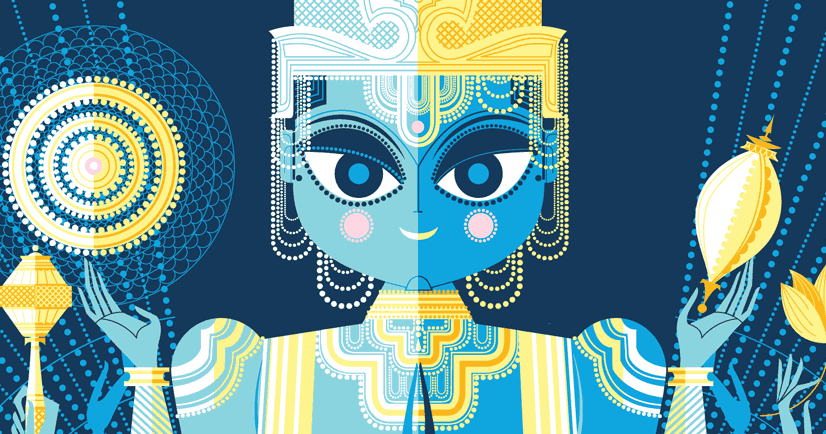- Your cart is empty
- Continue shopping

From an Ayurvedic perspective, ghee is viewed as more potent than milk due to it being transformed by fire. It is also much more stable, and can be kept for long periods without going bad (up to 3 months, unrefrigerated for cooking purposes). Ghee is sweet in taste, cold in nature and sweet in its after-taste, as is oily, soft, and heavy. Due to varying predominance of the 5 Ayurvedic elements in different types of milk, ghee from different species have different properties. For example, Ghee made from Elephant and Buffalo milk is the heaviest, with that from goat and camel milk being driest! Ayurveda recommends ghee from cow’s milk as as best for general food and medicinal purposes.
Ghee’s role in the ancient Yogic texts, the Vedas
”Brahman is the oblation; Brahman is the ghee; by Brahman is the oblation poured into the fire of Brahman.” (Baghavad Gita:4/24)
Ghee’s importance is reflected by many references in the ancient Vedas (the oldest scriptures known) to its use in the yogic diet, cleansing practices, and rituals (such as prayers, mantras, and offerings). To fully appreciate Ghee’s importance the role of food in general must be outlined. In Yogic philosophy, food is recognised as the great entity of life as its is responsible for the growth of the body. It is hence called Brahman (God), and rice mixed with ghee and ‘soma’ juice is described as the diet of God. Food is hence considered as sacred itself with most of the ancient Upanishad texts beginning with the diet of India’s ancient civilized society.
Beyond food being equal to God, the Vedas state the cow is the most sacred animal. The cow represents the giving nature of life in that they ”yield butter and milk inexhaustible for thee set on the highest summit.” (Rig Veda, 9/ 2.7) The Yogi view is that if you honour the ever giving cow, you also honour all creatures. As a result, cow worship is seen as of the highest form of worship in Yoga, and indeed other cultures. From a more practical point of view, cows were and are still vital for gaining adequate nutrition. Milk is a unique food, containing the best the mother can offer, even at the expense of her own health. The importance of cows in traditional Indian culture cannot be overemphasized.
Use of Ghee in Yogic practices
In light of nothing being considered more sacred than the cow and ghee being its essence, it is clear why ghee plays such a central role in Yogic practices. For example, during Diwali, ghee lamps are used to honor the gods. Many ceremonies involve pouring ghee, along with other offerings, into a fire which transforms them into higher vibrations. Yogis are advised to gaze at a ghee-lamp as astral entities can give Darshan (vision) through its flames. Just as cows nourish humans, ghee is believed to nourish inhabitants of more celestial realms. Without ghee, it is not possible to satisfy Lord Krishna and “it is solely and exclusively from the ghee of cows that the sacred rituals prescribed and authorized in the Vedas are empowered and able to be performed.”
Ghee is an ideal food for the yogi
“He who begins the practise of yoga without controlling the diet suffers from many diseases and does not make progress in yoga”. (Gheranda Samhita 5/16)
It should not come as a surprise that ghee is very important for the yoga practitioner. Ghee seen as the ideal sattvic (pure) food, purifying the mind, awakening knowledge and developing intuition. Ancient Yogis used ghee to helps move towards Yoga’s aim of stilling the mind, via the promotion of both physical and mental purification. Ancient texts give dietary guidelines for the Yogi, with ghee coming first in lists of ‘do’s’. It is advised ”sweet and nourishing food should be mixed with ghee and milk, nourishing all dhatus [tissues] and be pleasing and suitable.” (Hatha Yoga Pradipika, C1/62-63).

